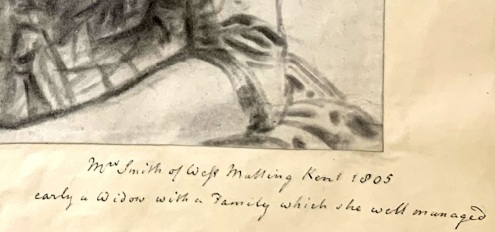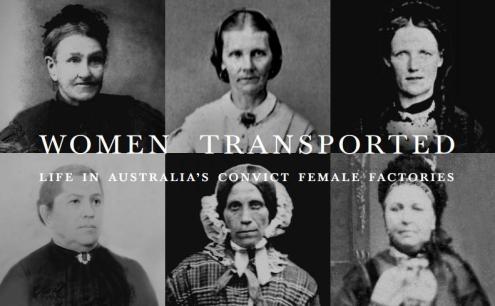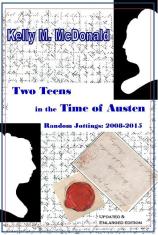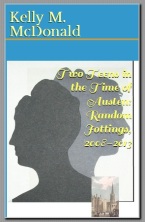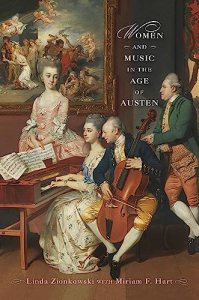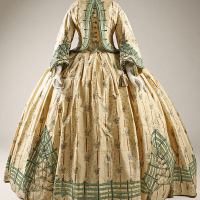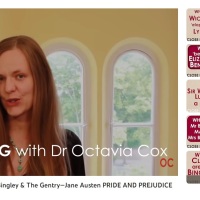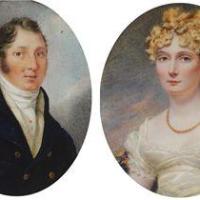Illustrating Mamma’s Diary, 1805 (part 3)
One of the most difficult parts of researching the family of Emma Austen is the fact that Emma’s parents were BOTH named “Smith”. Hard to winnow out relations and non-relations, with so common an English name as SMITH.
Mrs. Charles Smith – Augusta Smith, senior – “Mamma”. She has, from the beginning, been easy to track, because her father, Joshua Smith, was a Member of Parliament (for Devizes) and a landowner. The estate itself causes problems. Spelled Erle Stoke Park; Erlestoke Park; as well as Earl Stoke Park. Alas, the estate exists, and yet doesn’t. The fabric of the building sustained a fire. The estate is now known as HMP – His Majesty’s Prison – Earlstoke (Wiltshire).
Mr. Charles Smith of Suttons – “Papa”. He had one living sister. The Smith of Suttons children called her “Aunt”. This simple appellation has caused others to mistake her for one of several other aunts. But Aunt Northampton, Aunt Chute, Aunt Emma (all are Mamma’s sisters) are accounted for. It is JUDITH SMITH who is forever and always called, simply “Aunt“.
And it is Aunt, who, by 1805, had a quartet of three nieces and a nephew: Augusta (junior), Charles Joshua, Emma, and Fanny, all of whom visited the Smiths at Stratford, Essex. Judith’s mother was still alive, and the two lived together. Mamma sometimes denotes them as “Old Mrs. Smith” and “Miss Smith,” and they are usually noted together. Aunt remained a “Maiden Aunt” all her life. Judith was born in 1754 and was two years older than her brother, who was significantly older than his (second) wife. Augusta, senior had been born in 1772, and was 26 years old at the time of her 1798 marriage; Charles would turn 44 in September of that year. He welcomed his first child – Augusta, junior – in February 1799.
Mamma – who was super close to her own sisters, Maria (born 1767) [Lady Northampton]; Eliza (born 1769) [Mrs. Chute of The Vyne]; and Emma (born 1774) – took a while to cozy up to her sister-in-law.
But Judith had relatives of her own, more SMITHS, of course!
One family, mentioned in Augusta Smith’s 1805 diary, is the Smiths of Malling. Always denoted by the designation “of Malling,” their matriarch is a third portrait in artist John Downman’s albums, “First Sketches of Portraits of distinguished persons,” held at the British Museum. You can see them online, digitally presented. The “Study for Mrs. Smith of West Malling, Kent, 1805” can also be viewed on the BM website.
Mrs. Smith of Malling presents an interesting case of a young woman, eventually the sole heir of her parents, who seemingly married “for love”. Her full inheritance came through the death of her brother. The Monument Inscription in Meopham gives the unfortunate particulars:
Hither soon followed them
their son WILLIAM, the heir of their fortunes
and their virtues; a fair inheritance:
but alas of their mortality too.
which lot befel him at the early age of 28
April the 12th 1761
‘He died of the small pox
unhappily procured by
inoculation’
Known as “the heiress of Camer,” Katherine (or Catherine) MASTERS married William SMITH of Croydon. Through her came her father’s estate of Camer.
And with her came a slot in the family vault for her husband.
As Downman noted, Mrs. Smith of West Mallling was a widow with numerous children. Her husband died in 1764, aged only 44. He (and his family) are buried at Meopham (in Kent). I have found two sons and two daughters of the reported six children (three of each sex), “all in their infancy,” who remained at the time of their father’s death.
- Rebecca: born 1750, she died in 1802. Mamma mentioned her death in her diary – it was Rebecca’s obituary that enabled me to find more information on the family as a whole. Her obituary says she died after a lengthy illness (which could indicate cancer);
- Catherine: born 1752, she died in 1777;
- George [of Camer]: born 1757; he died in 1831;
- William [of Fairy Hall, Kent]: born 1759; he died in 1830.
William Smith (senior) was related to Charles Smith’s father – Charles Smith of Stratford (Essex), who wrote on the Corn Laws (he died in 1777). His widow, “Old” Mrs. Smith of Stratford, lived until 1808. From Augusta Smith’s diaries, including this one of 1805, “Aunt” (Judith Smith) often visited the Smiths of Malling, and she must have lost a good friend in “Miss Smith of Malling” (Rebecca), when she died.
A 1940 article by Edward Croft Murray from The British Museum Quarterly (vol. 14, no. 3; pp. 60-66) describes these Downmen albums – and gives their background history. The albums, “not sketch-books in the strict sense of the word,” are where “the artist mounted his delicately drawn ‘First Studies’ … with their dates, the names of the sitters, and usually some comments on them, all in his [Downman’s] own handwriting.” Anyone looking at the BM images can see the truth of that statement, but it is mind-blowing to learn:
- “These albums were originally arranged by Downman in four series, more or less in chronological sequence, each series containing four to eight volumes, and each volume between about twenty-five and thirty-five drawings“;
- “Series i is said to have been sold previously [before 1825-1827] and the original eight volumes belonging to it dispersed, some of them having been broken up and their contents scattered even further among various collections”;
- “Vols 1 and 3 of this Series [Series i] however, are still intact, and were sold .. at Sotheby’s on 15 February 1922, passing eventually to the Fitzwilliam Museum, Cambridge, in 1938″.
The Fitzwilliam provides a physical description of an album in their collection as, “Red leather coverboards with gold tooling. Green end papers and boards. 61 sheets in total including 26 protection papers [these are usually “tissue-like], bound in. Pages are gold edged. Contained 30 drawings, each laid onto the recto of a folio sheet.”
Downman himself said the albums denoted his “pleasant Employment of many Years; and in this assemblage of Portraits, you will see how different Fashions change ….” He admitted that he had “no Idea of a Collection ’till I found insensibly the Accumulation.” Indeed! Can you imagine the ENTIRE collection as he and his daughter Isabella Chloe (later Mrs. Benjamin) knew it???
Ah, the “lost” portraits! I second the author’s wish for a publication of ALL extant drawings.
Further information, related to the Quarterly article:
- “How Downman drew ‘The Larking Family’” (The Connoisseur, Sept 1926)
- G.C. Williamson’s book, John Downman A.R.A.: His Life and Works (1907)
- Lady Northampton, 1779; by Downman [Jane Compton, née Lawton, the 8th Countess; Uncle Northampton’s mother]
- Other Downman images from the Fitzwilliam Museum
By the way, the Sir Robert Cunliffe of Acton Hall, Wrexham, mentioned in the articles, was a relation to Mary Gosling – with Emma my “Two Teens in the Time of Austen” – through her maternal grandfather, Sir Ellis Cunliffe.
For the woman born Katherine Manners, Mrs Smith of West Malling: her heirs “founded” the familial line of “Smith Masters” and “Masters”. Downman painted in 1805, and Katherine Masters Smith died on 6 February 1814, aged 86 – meaning she had been born circa 1728. No wonder Mamma Smith thought of her as “Old Mrs. Smith of Malling.”
The family who outlived Katherine called her “their excellent mother.” Downman, a West Malling neighbor, must have agreed with that assessment. He wrote below her portrait that she “well managed” her family.
* * *
Part 1 of the series Illustrating Mamma’s Diary, 1805
Face of a Neighbor
Inevitably, whenever _I_ find something up for sale, the sale is LONG past.
Same applies for this portrait of Joanna (Miss Cure). By the time the painting was done, circa 1850, she would have been Mrs. Philips of Heath House, Staffordshire. (She married in 1826.)
The original auction took place in April 2022, at Mellors & Kirk (see the catalogue, which currently still has pictures of the items).

A secondary sale of the portrait has also taken place (with a subsequent “hike” in price).
Emma’s diaries include visits to and from “the Miss Cures” – Joanna Freeman and Mary Caroline, the two daughters of the Capel Cure who died in 1820. Visits took place both in London and at the Cures’ home estate in Essex, Blake Hall, a “neighbor” to the Smiths’ Essex estate of Suttons. Children of their brother Capel Cure (who died in 1878) married children of Mary and Charles Joshua Smith in the mid-19th century: Augusta Smith married Lawrence Capel Cure; her brother Sir Charles Cunliffe Smith (baronet) married Agnes Capel Cure.
- see Silvy photographs of Sir Charles Cunliffe Smith and his wife Agnes Lady Smith at NPG.
- more Cures: parents Capel Cure, his wife née Frederica Cheney; their son Edward and daughter Rosamond.
One problem with the portrait, the plaque of which identifies the sitter as “Joanna Capel-Cure, 1797-1858” (which ARE the dates for Mrs. Philips), is the youth of sitter in a portrait purportedly painted in 1850. The only two “Joannas” in the family tree at this time were the sister, Joanna Freeman Cure (Mrs. Philips) and mother Joanna, born Coape (her sister Frances married William Smith MP) [the Smiths’ daughter Frances married into the Nightingale family].
Joanna Freeman Cure would have been 53-years-old in 1850. This youthful girl, with a come-hither gaze, displays no whiff of middle-aged Victorian matron.
Capel and Frederica Cure had four daughters:
- Frederica Mary, who died in 1835, aged 10;
- Rosamond Harriet, the surviving eldest sister (born 1831) [same Silvy portrait at Paul Frecker]
- Emmeline, who died, aged 19, in 1854 (born in 1835)
- Agnes Frederica, the youngest sister (born in 1836).
It’s hard not to wonder if the plaque wasn’t added, erroneously, at a later date. IF it were originally identified as “Miss Capel Cure” – that could point to Rosamond. Yet photographs of her, taken by her brother Alfred in the 1850s, shows a broader chin, a heavier face.
It is possible that Mrs. Philips acquired a portrait of her deceased niece, Emmeline. There also exists a later Cure-Philips intermarriage: ROBERT Capel Cure’s son Ernest married John Capel Philips’ daughter Frances Margaret.
Thank goodness for HEATH HOUSE!
Back in 2009 the estate was up for sale. Ruth Watson visited, as part of her show Country House Rescue. This Heath House episode is online. Forward to 2023 and the estate has sold – thus the 2022 auction of items! The TV show offers an interesting look at two generations – one only too happy to be rid of their “white elephant.” Viewer comments are enlightening. And the video – showing a magnificent house and grounds (if run-down) – is priceless for filling in with a true portrait of Mrs. Philips née Joanna Cure.

At the VERY least, here is the face of Emma Austen’s neighbor, an intimate of Emma’s youth in Essex and London. As the woman behind the building of Heath House (and probably behind much of the furnishings that came via their grand tour while the house was being built in the later 1830s), the portraits of Joanna and her husband John Burton Philips were prominently hung – you will spot them several times if you view the video. Are they still owned by the Philips family? And who is the sitter of the portrait at the head of this blog post?? WHERE does “she” live now? I would love to hear more…
Shakespeare, Queen Elizabeth & Tring Park
Some exciting news –
A little while ago I found David Shakespeare‘s work on the “Pregnancy Portrait” of Queen Elizabeth I. David has come across a photograph of Tring Park (Hertfordshire) during the Rothschild years — and his sharp eyes spotted, hanging on the Hallway wall, the very portrait I had found in a Smith Sister’s drawing, which quite obviously “copied” this well-known work:
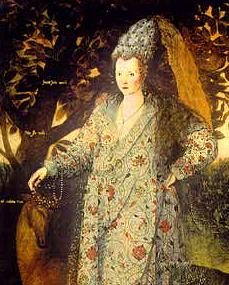
Below is the sketch, enlarged to show only the “Portrait,” in pride of place between two Drawing Room windows — the image’s focal point as well as the room’s focal point, despite the loss of the fourth wall behind the viewer. This interior sketch surely dates to the late 1820s, during the Smiths’ early occupancy of Tring Park, their Uncle Drummond’s [Sir Drummond Smith] former country house, by that time sold out of the family – and yet rented again by his relations:

In my first blog post (written nearly ten years ago) I called this image “Mystery Lady and Deer” and I was seeking further information and had hoped for identification (see post “Have you seen this Lady?“). A few months later, I found the “Elizabeth I” image. As I wrote at the time, it was a “MAJOR Oh-My-Gosh!” moment (see “Mystery Portrait ID’ed“).
From time to time, I’m impelled to revisit old thoughts, old blog posts. I don’t recall what I was looking for — undoubtedly something to do with TRING — when I came across this discussion from David Shakespeare, on the very portrait in question!
- “A Second Pregnancy Portrait” – David Shakespeare’s YouTube channel (35 min)
- “A Second Pregnancy Portrait” – David’s fully-illustrated 29-page PDF
It was the PDF that I came across first. Impressive scholarship! A member of the De Vere Society, David’s hour-long presentation on “The Pregnancy Portrait of Elizabeth I” (2018) is a must watch. I’ll include here a link to David Shakespeare’s entire YouTube channel.
As you might imagine, when I emailed the full sketch (the original is among the Austen Leigh papers at the Hampshire Record Office), David was intrigued enough to visit Winchester with great speed. What intrigued me was the ability to really see, thanks to his detailed photographs, what I have never seen in person. Heightened to darken the faint pencil lines of the original, for the first time, all viewers get a glimpse into Tring Park and the material lives of the Smith Family.
An ASIDE:
Tring was the first marital home for Emma and Edward Austen [the Rev. & Mrs. James Edward Austen Leigh], and the birthplace of their first children.
I have come across three sketch books by Fanny Smith (Bodleian Library, Oxford); one by next youngest sister, Charlotte Smith (Tring Local History Museum); and work of youngest sister Maria Louisa Smith. So there are “contenders” for the artist(s) of the two sketches of Tring Interiors at HRO (Hampshire Record Office). HRO presumes the artist to be either eldest sister Augusta Smith or next eldest Emma Smith. Without in-person study, and other artists’ work as comparison, I make no guesses.
Another ASIDE:
A related sketch book, of ten drawings, sold on eBay in November 2020 – the known contents of which (five drawings) closely mirror the Fanny-Charlotte sketches. Presumably, the sisters were sketching the same places together. Needless to say, I would love to know more about the current whereabouts of this eBay item, as would Tring Local History Museum.
I invite you to view David’s newest video “Update on the Pregnancy Portraits” (there’s a PDF as well) – where he not only tells about Tring’s missing portrait, but also offers fascinating insight, observations, and theories on the “original” portrait. And, yes, the plural word “portraits” is meant literally. For David would DEARLY LOVE to find the painting that used to hang at Tring, last seen during the Rothschild ownership.
- “Update on the Pregnancy Portraits” – video presentation by David Shakespeare (42 min)
- “Update on the Pregnancy Portraits” – fully-illustrated 37-page PDF
Thrilling for me is David’s up-close-and-personal dissection of the Tring Drawing Room!! Including fascinating new information on the pianoforte seen on the left edge of the sketch. He will walk you around the room, before informing you about the “painting” seen in the drawing and the portraits – found and yet-to-be-discovered.
Join us!
2/2/22 – Mary’s 222 Birthday
I simply could not let today pass without a passing nod at my first diarist, Mary Gosling — also know here as Lady Smith (following her 1826 marriage to Sir Charles Joshua Smith, baronet).
There could be NO harder name to “search” or “research” than a couple called Charles and Mary Smith!
And yet, the research has been GOLDEN.
I first found Mary’s earliest diary – a set of six trips taken between 1814 and 1824 – in 2006, when I was wishing to note down “authentic” sightings of the Ladies of Llangollen, Sarah Ponsonby and Eleanor Butler. I had visited their northern Wales home, Plas Newydd, in 2005. Mary Gosling met them! And she left her impressions of them. Well… less her impressions than notes of what others always said of them. I was QUITE disappointed, especially in the brevity of her thoughts — for, within a page, the family had DEPARTED Llangollen!
BUT: Mary herself began to intrigue me. Mainly, because the family members were shown around Plas Newydd and they spent about four hours with the Ladies, in their home. THAT one premise began EVERYTHING that has gone on since — from all the research into the Smiths of Suttons, as well as my interest in the Ladies of Llangollen themselves.
The results of all this early research:
- Two Teens in the Time of Austen – this blog, so named because Mary’s sister-in-law, Emma Smith, my second diarist, married James Edward Austen. And Edward was the nephew of writer Jane Austen.
- Ladies of Llangollen – a blog whose information, based on a website I created circa 2006, still needs additional work, but it currently hosts interesting artwork, book excerpts, and information on people who visited Plas Newydd — the GOSLINGS included — during the tenancy of Ponsonby and Butler, as well as after.
The Smiths took over my life – buried me under diaries and stacks of letters, stocked my brain with tidbits of personal and national (England) history, squinted my eyes in deciphering a myriad of eighteenth- and nineteenth-century “hands,” and made me spend my money and my time (not sure WHICH is more costly, in the end), in a never-ending pursuit after more knowledge. The nosing-around their lives has made and still makes me HAPPY.

by Frenchie (Photobucket)
With that thought, I wish Mary Gosling the HAPPIEST 222nd Anniversary of her 2 February 1800 birth. She graced the earth for only 42 years, leaving three youthful children, whose faint faces I have now unearthed. And she opened the door for a true glimpse into the past.
The After-Life of Ann Jackson, Servant
Quite some time ago, I found reference to “Bennett Gosling, Esq.” at the Old Bailey Online. His valet, Thomas Wenlock, was giving testimony in a theft case that had occurred in July 1839. I made mention of both Thomas Wenlock and Ann Jackson as having been part of Bennett’s household on the page “Servants-Clerks-Governesses.” For Ann Jackson, her employment seemed in the past.
Given that I have, (I think), ONE letter penned by Bennett Gosling – a brief note. Given that, among the Goslings, only Mary Gosling, Bennett’s younger sister, has left diaries – which, except for travels, are all daily diaries written after her marriage in 1826 to Sir Charles Joshua Smith, baronet (Emma Austen’s brother). AND given that only a handful of a household’s servant population manage to gain more than one mention in a person’s diaries (ie, there might be at least the hiring and/or the dismissal mentioned), SERVANTS are the hardest to construct any kind of roster. The early 19th century census, unlike our common “every ten years” really comes down to the 1840 census — and people were not always at home on Census Day. I once searched the census for Mary, Lady Smith – I had her birthday — Ancestry could NOT find her. I looked up her diary — she was in town (London) and staying at the Curries’ home (sister-in-law Charlotte and husband Arthur Currie).
Little did I know, at the time, that the age for Mary was incorrectly approximated in the census. In essence, I knew (and searched) too-specific information!
Anyway…
I was happy to find mention of Ann Jackson a few days ago. She turned up in an Australian database because she received a sentence of TRANSPORTATION at her 9 July 1839 trial. This *find* of a new-to-me website made me revisit what I had previously found at the Old Bailey.
The transcript of Ann Jackson’s trial can be read online. She was found to have in her possession disparate items from two households – the stays of Mrs. Pearse, for example, valued at 30 shillings; and two coats (valued at £4) of Bennett Gosling, Esq.
Arrest and trial records of the period tend to be rather sketchily transmitted. The policeman, Andrew Wyness, for instance, according to his testimony, follows the young woman, pushes open a door, and then confronts Jackson, demanding to know what’s in her bundle.
Was Wyness entering a residence? a rear yard? What had made him suspicious of Jackson, other than that he spotted her at “Four in the Morning”…
Wyness could not have known at the time that Ann Jackson would be found to have an alias – Maria Donaldson – though WHAT NAME she was using at the time of her employment with the Pearses (or Bennett Gosling) is not quite noted. Surely Wenlock had not known her under one name and come across her at the Pearses’ (where he lodged) under another, but which name she used when is anyone’s guess.
That she was indicted under the name ANN JACKSON leads me to believe this was her legal name.
Wenlock’s testimony that he and Bennett (“his master”) “went into the country” can only mean they spent the weekend at Roehampton Grove, before returning to banking duties on Monday. Sister Mary’s diary does not indicate a visit to Suttons that July weekend.
The Prisoner at the Bar was summarily sentenced after a brief self-defense. She was given Ten Years and Transported to Van Diemen’s Land. Ann Jackson was 23-year-old at the time of trial.
Jackson’s Australian history is picked up by the website “Edges of Empire Biographical Dictionary of Convict Women from Beyond the British Isles“, edited by Lucy Frost and Collette McAlpine.
Jackson sailed on the Gilbert Henderson, reaching Van Diemen’s Land on 24 April 1840. Steve Rhodes, in his write-up of her biography, supplies interesting details missing from the curt Old Bailey transcript. Born in South America, she had been raised in London. Rhodes believes her legal name to have been MARIA DONALDSON, and promotes a marriage to one Robert Donaldson with a marital home at 1 Tavistock Street, London. The marriage had produced at least one (living?) child.
Surely it is convict records that accounts for the fascinating PHYSICAL details:
Jackson “was a short woman at 4 feet 9 1/2 inches (146.05 cm) tall, had dark brown hair, hazel eyes and fair complexion, and her freckled nose was inclined to the right.”
Records record only a few personal details of her time in Australia. There’s a “case of misconduct” (no information) on 16 April 1842. The delivery of an illegitimate child a few months later, on 28 July 1842. She married John Sykes, “a free man”, in Hobart on 26 December 1843. Evidently in the marriage registry Sykes is described as a 25-year-old mounted policeman. Given the earlier indication of a marriage, Jackson is incorrectly described as a 26-year-old “spinster”. “There were three children known to be born to Ann Jackson”, writes Rhodes, though I am unsure if this includes the two prior children he had already established or not.
Also produced online is the BOOK, Women Transported: Life in Australia’s Convict Female Factories – a tie-in with a (2008) exhibition. Access the PDF catalogue and its essays by clicking on the picture (above). Essays include Gay Hendricksen’s WOMEN TRANSPORTED – MYTH AND REALITY; Carol Liston’s CONVICT WOMEN – IN THE FEMALE FACTORIES OF NEW SOUTH WALES; and Trudy Cowley’s FEMALE FACTORIES OF VAN DIEMEN’S LAND.
PLEASE NOTE: the website listed on the title page goes to a blog. The correct website address evidently is a “dot org”: https://femalefactory.org.au/ which will take you to the website for Cascades Female Factory (currently – early 2022 – closed for construction of a new History & Interpretation Centre).
Interesting reading in their evocative Brochure. There were five such “factories” in Van Diemen’s Land. And, yes, Ann Jackson’s name appears in the catalogue’s list of names.
Faint Faces Found
I’ve been searching for several things lately, and usually come across something completely different in that kind of situation. Friday night proved to be no different.
I’ve been reading through old letters, first from 1840 (to go with a diary I’ve transcribed); then those from 1836 – a momentous, tragic year for the Smiths & Goslings, because of the deaths (by drowning) of Augusta and Henry Wilder, in a boat accident. I have recently come across two *new* letters, written in the aftermath of this family tragedy.
1840 was another year of loss – with the death of sister Charlotte Currie. And it was in the hope of (always a hope!) finding more letters from Charlotte that I began reading letters to Charlotte, written predominantly by eldest sister Augusta Wilder.
It was while looking for any “hit” with Charlotte and Arthur Currie, that I searched for one of several addresses at which Arthur lived – and found that his old home, High Elms (Watford), is currently up for sale! It’s a MASSIVE 14-bedroom (7 bath) Grade II listed house:
Arthur settled here long after Charlotte’s death, bringing their children and his second wife, Dora (née Seymour; the widowed Mrs. Chester). The interiors are stunning (if “empty” looking in these photos). Take a peek now (before the listing disappears) – although the price is liable to keep it on the market for a bit of time – asking £7.5 million (it does come with 10 acres of land).
[Be advised: Arthur Currie of High Elms is far different from General Sir Arthur Currie.]
When High Elms was still called “Garston Manor” (from the 1890s until 2010), it was featured in a 2011 episode of Country House Rescue, the series hosted by Ruth Watson. I must see if I can find that particular episode…
Friday, I had also been trying to locate the diary (sounds like there is only one, but one never knows!) of Jane Eliza Currie – the wife of Captain Mark John Currie, Royal Navy, Arthur’s cousin. The one diary – though (great pity!) I’ve not been able to locate images of its written contents – covers the couple’s voyage in 1829 and stay (through 1832) in Australia — in quite a new settlement at the time, which is why she as well as he comes up in searches. I’ve had a brief look through Smith & Gosling letters and early diaries for Miss Wood (I don’t know if she went by ‘Jane’ or ‘Eliza’ – I find people referring to her by each of those; but what did she call herself??) and/or the Mark Curries Junior. Not successful there. Being out of England until their return in the 1830s, means there’s no hope (or very little) that Arthur and Charlotte would be mentioned by Jane Eliza – but one never knows. It is a new avenue to take a look down. What I have found is located at the Mitchell Library, NSW. And Currie just is not an easy name to search for — so much overtaken by a certain “General Sir”.
I have also been trying to remember who I had found – among the grandchildren? (not sure now) – whose death had been looked into via a coroner’s inquest. An accidental overdose. I remember a woman… Laudanum or Morphine… but the WHO escapes me, as does the date (19th century still? Early 20th century?). I thought maybe one in the Capel Cure family – and that was how I located my *FIND*!
Of Mary Gosling’s three children – Sir Charles Cunliffe Smith; Mary Charlotte Smith; Augusta Elizabeth Smith – two married children of Capel Cure and Frederica Cheney. The Cure siblings make for heartbreaking reading in retrospect – five of the eleven children died before the age of 21. The main seat of the Cures, Blake Hall, is very familiar from the letters and diaries of the Smiths and Goslings. Of course Mary (Lady Smith) never lived to see these marriages of her children – she died in 1842 and the first marriage, Sir Charles Smith to Agnes Cure, occurred in February 1855. The next to marry, in 1857, were younger sister Augusta Smith and the Rev. Lawrence George Capel Cure.
[Elder sister Mary married in 1861, Major Gaspard Le Marchant Tupper, Royal Artillery.]
Since much literature that mentions the Capel Cure children does not mention all of them, I will list them here. You can find them in the 2nd volume of The Visitation of England and Wales (same place the Smiths of Suttons turns up):
- Robert
- Henry (died aged 7)
- Frederica (died aged 10)
- Alfred [the photographer]
- (Rev.) Edward
- Rosamund
- (Rev.) Lawrence [married Augusta Smith]
- Emmeline (died aged 19)
- Agnes [married Sir Charles Smith]
- Charles (died aged 8)
- Frederick (died aged 14)
I have known of the photography work done – early in the “life” of photography – by Alfred Capel Cure. I have come across images of trees or estates – but Friday I spotted a LOT of PEOPLE. And when one album, digitized by UCLA, popped up a photograph of a portrait of “Sir C. Smith” by Ercole (whom I knew to have drawn Lawrence Cure), I slowed to savor each of the gentry portraits in Alfred’s album.
WITH SUCCESS!
A couple of photographs of Charles — whom I often still refer to, as his mother Mary did, as “Little Charles”. Mary, of course, was differentiating husband from son; I, on the other hand, know the son through the mother – and he was a child and teen in Mary’s lifetime. (Charles was born in 1827.) At least one album photograph ID’s him. Also ID’ed in a photograph is “Lady Smith and Miss Cure” – Alfred’s sisters, Agnes and Rosamund. Agnes and/or Rosumond (the only surviving girls) feature in a couple of group portraits, one of which surely includes Lawrence – it so resembles his Ercole portrait.
There are pictures of the exteriors of Suttons, Blake Hall, Badgers (a Cheney estate, which came into Alfred Capel Cure’s possession). So many familiar names. So many unknown faces.
Among the familiar names a faint and faded face identified as Lady Marian Alford. Lady Marianne Compton, as she originally was, was the eldest daughter of Spencer 2nd Marquess of Northampton (Emma’s cousin) and Margaret Clephane. There are a LOT of images – painted and photographed – of Lady Marian (Viscountess Alford) out there.
Alas, no one identified as Mr. and Mrs. Leigh or their children … – which might have unearthed some new images of Emma and James Edward Austen.
But, among the faint and faded, came a duo identified as “the Misses Smith” and dated “Badger, 9 Nov:r 1854“. And I knew I had found something “Completely New”.

I usually have a “feeling” about a *FIND* – including excitement and sureness of the “who” or “what”. I don’t know WHY, but I have almost no feelings on this portrait. Except of loving the sweet faces I see.
Maybe it’s because, named “the Misses Smith” – I’m not sure who is who.
I think the elder sister is standing; the younger sister is seated. The standing sister is smiling, broadly. A ring and what looks to be a charm bracelet dangle are on her visible right hand. Her left hand rests on the chair in which her sister is seated. This seated sister has a quieter look, as if not quite “ready” for the camera. And yet, there is an attractive wistfulness that becomes haunting the more one looks.
When they posed at Badger, Mary Charlotte Smith was soon, at the end of November 1854, to celebrate her 26th birthday. Augusta Elizabeth Smith was a few months past her summer celebration of turning 24-years-old. That it IS them is not in doubt – the diary of their uncle, the Rev. Richard Seymour, notes welcoming them to Kinwarton just after their stay at Badger.
The sepia coloring of the album’s print continues strong, fading only along the lines of the gowns and around their hands. It is a remarkable souvenir of their day, (or stay), at Badger during the time of their brother’s engagement.
- To view the album of Alfred Capel Cure, at UCLA
In the window that opens, toggle the “single image” icon (upper right corner) and type 143 into the image box at top center; this is the page that will come up. Mimi and Augusta are the left-most photograph:
The views include their brother, Sir Charles Cunliffe Smith; his wife Agnes Capel Cure; the Cure siblings, including Augusta Smith’s future husband, Lawrence. Estates include images of Suttons, Blake Hall, and Badger. As well, the full architectural and military images that are to be found elsewhere on the internet, charging money and adding their own watermarks, when UCLA offers downloads free.
- THIS link seems no longer to function (use the above link instead): To see the single photograph of Mary and Augusta, “the Misses Smith” [click on the link under the words “Image Content”; ignore the misspellings in said “link” & “title”]
Aunt Emma’s Sidney House, Southampton
Found, yesterday, a few indicators hitherto unseen, concerning SIDNEY HOUSE (also spelled Sydney House), with the address of Peartree Green, Southampton. The first comes in an article by Jessica Vale (1983; Proceedings of the Hampshire Field Club & Archaeology Society). Vale’s “Country Houses of Southampton” looks at aspects of several properties with familiar-to-me names – given that the Smiths of Suttons and 6 Portland Place had many ties to this general area of Hampshire. But for my purposes today it was the MAP that called upon my deepest attention:
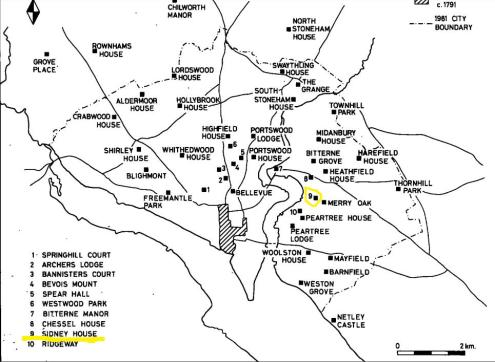
There, indicated by a numbered “square” dot was Aunt Emma’s SIDNEY!
I can see the network of neighbors all around her, and will be better placed for putting names or “estates” into LOCATION, whenever I get back to work on Aunt Emma Smith’s diaries. (I find her looping handwriting a challenge at present.)
I had been hoping (once again…) to find drawings or photos of Sidney. Still hunting, I’m afraid. BUT: I did find the next best thing: a newspaper ad, which describes the house and its grounds.
Advertised as “TO BE LET” in the Hampshire Telegraph and Naval Chronicle on 28 April 1823, the area around the house is tantalizingly portrayed as,
“near Peartree Green, Southampton, — SYDNEY HOUSE, with Lawns, Shrubberies, capital Gardens, Hot and Green-houses, and a few Acres of Land, &c”
The dwelling consists of….
- an entrance hall;
- small library;
- dining room;
- anti, and large drawing-rooms;
- three best bed-rooms and dressing rooms;
- and six servants’ rooms
Detached, one finds…
- the kitchen;
- offices;
- laundry;
- brew-house;
- and four-stall stable, coach-house, harness room, &c &c.
I am uncertain as to weather Aunt Emma answered this ad – or leased it later. Mentions of Sidney crop up in her 1826 diary – but, with the exception of a travel diary (trips in 1823 and 1825) no earlier domestic diary has yet been located for Miss Smith of Sidney. Family letters dating to her tenure at Sidney go back only to 1828.
Emma Smith’s father, Joshua Smith of Erlestoke Park (Wiltshire), once the MP for Devizes, had died in 1819. Emma, as the remaining unmarried sister among Joshua’s four “equal” heiresses, was quick to remove herself from Erlestoke. Family letters comment on the bare walls – devoid of Emma’s artwork, as she packed up. The tense situation was not helped by Miss Smith’s relationship with Amelia Macklin.
____________________________________________________
Further Reading:
-
- The Mystery of Miss Macklin
- Macklin & Aunt Emma
- see also “The Macklin Album,” Wiltshire Heritage Museum
____________________________________________________
If Aunt Emma DID respond to this ad, it was a Mr. Mecey (“All letters to be post-paid”!), Estate Agent and Auctioneer, Southampton that one applied “For particulars, and Tickets to view.”
Vale’s article includes, at the end, an appendix of the houses in the article. Sidney House is listed as “built c1790, demolished after war damage” in World War II. It does not give a year of demolition. I had once hoped that I had perhaps spotted SIDNEY when in the area some years ago. Guess not. . . A legacy report cites evidence on the 1949 Ordinance Survey Map of its demolishment by 1949, and confirms that two WWII bombs hit the general site.
Downshire House, Roehampton
Interesting, if brief, post by Roehampton University on the history of one of their buildings, Downshire House. This was once owned by Arthur Hill, 2nd Marquess of Downshire. It was the widowed Marchioness who engaged James Crump – a man who later went to work as her neighbor’s butler – to accompany two sons on a Continental tour. The Hill family have a Jane Austen connection, one that at the beginning of this year (2019) had news of a surprising eBay find: a photo album now owned by Karen Ievers.
I have so far found no references (prior to the Knight-Hill marriages) to indicate any relationship between the Hills and the Goslings, despite being near neighbors. Perhaps the Marchioness did not “associate” with the family of well-off bankers… Perhaps her residency in Ireland and at Ombersley Court meant she was so rarely in town that the Goslings had few opportunities to entertain her. I am *hopeful* (and yet doubtful) of finding reference to them in the diaries of the Hill daughters – but their tale is kept for a later blog post.
Northamptonshire Past & Present
“…because the Work is too hard for Women, it requires more strength than they are capable of, to raise Walls of Defence about a Lady’s Shape.”
— Robert Campbell, The London Tradesman (1747)
regarding the fact that “stay-makers were always men”. “Stays were made of buckram, a thick, heavily stiffened, linen, difficult to cut and sew.”
The owner of the stays in this instance was Lady Langham of Cottesbrooke. On March 26, 1774, Lady Langham wrote of paying £1 16s to “Harrison” for “a pr of Stays”. The summation of Lady Langham’s London expenditures turns up in the eye-opening article by Judith Hodgkinson.
It is one article in back issues – now digitized (and continuing to add volumes) – of the journal Northamptonshire Past & Present produced by the Northamptonshire Record Society. [This particular volume is No. 62, from 2009.]
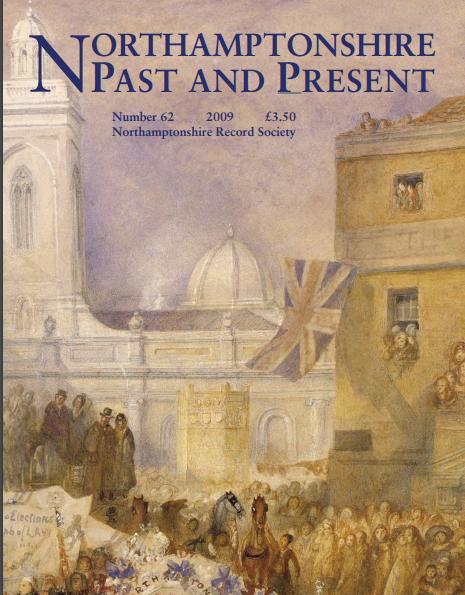
Of course, Northamptonshire has Two Teen in the Time of Austen connections in being the location of Castle Ashby, home of the aunt and uncle of Emma Smith (later Emma Austen; and still later Emma Austen Leigh) – Lord and Lady Northampton.
I’ve even located a couple of related articles!
The first, “George London at Castle Ashby,” by the estate’s prior archivist Peter McKay. These are very early doings, indeed: 17th Century gardens. [article appears in No. 61 (2008)]
The second, also by Peter McKay, is brand new – issue 70 (not digitized; though the volume for sale) – “The Grand Tour of James, Lord Compton, 1707-1709.
The current issue also discusses such as Boughton House and Burghley House; a couple of locals – John Cope and the Rev. Henry Jephcott; as well as “Suffragettes and Suffragists in Northampton”.
Jane Austen: Used book buyer?
In the appendix to JANE AUSTEN THE READER (2013), (a link provided by Springer [the publisher]), the quotation “‘new books were luxuries but not out-of-reach luxuries’” for the “all-female Austen household” may be too narrowly focused when discussing the possession of books by Jane Austen.
Why limit the idea of “books” to new books and think of them as luxuries?
Certainly, a gifted book could have come Jane Austen’s way, and Olivia Murphy (the author) accounts for such volumes. Evidence, however, leans heavily on the Godmersham Library collection of Jane and Cassandra’s brother, Edward Austen Knight. As with any intake of books, some might have duplicated Edward’s own, been rejected or “regifted”, or sold on.
It is the sold on that provides the clue to my current argument: There were also auctions, used book shops, and disbursed collections (which may include titles that were missing volumes).
With the death of Edward Austen Knight in November 1852, a valuation and reassessment of the Godmersham Library logically would have been undertaken. There does exist – and Murphy discusses this as part of her argument – evidence dated ‘1853’. That these books came from Cassandra Austen, either directly or through her niece Cassy Esten Austen, is perhaps a bit of a stretch. And, of course, what was once Cassandra’s may have come from her sister, which is the whole point of the appendix, which is entitled “What Happened to Jane Austen’s Books?” To Murphy, the context of other titles housed in the Drawing Room (“the Bible, the Book of Common Prayer and the novels of Maria Edgeworth”) is more important than the changing of the guard in home-ownership.

Click on the link here and then on the PDF for the section “BACK MATTER” (pp. 177-231) to read: Appendix: What Happened to Jane Austen’s Books?
* * *
A ‘rare’ instance of Jane Austen commenting on contemporary books, thru the parody of writing to “Mrs. Hunter of Norwich” (in actuality, Austen’s niece Anna Austen), in 1812, was up for auction in 2017. It sold for £162,500 (estimated by Sotheby’s to fetch £80,000-£100,000). A news story produced at the time (July 2017), “A Cache of Jane Austen’s Charming Letters.”
